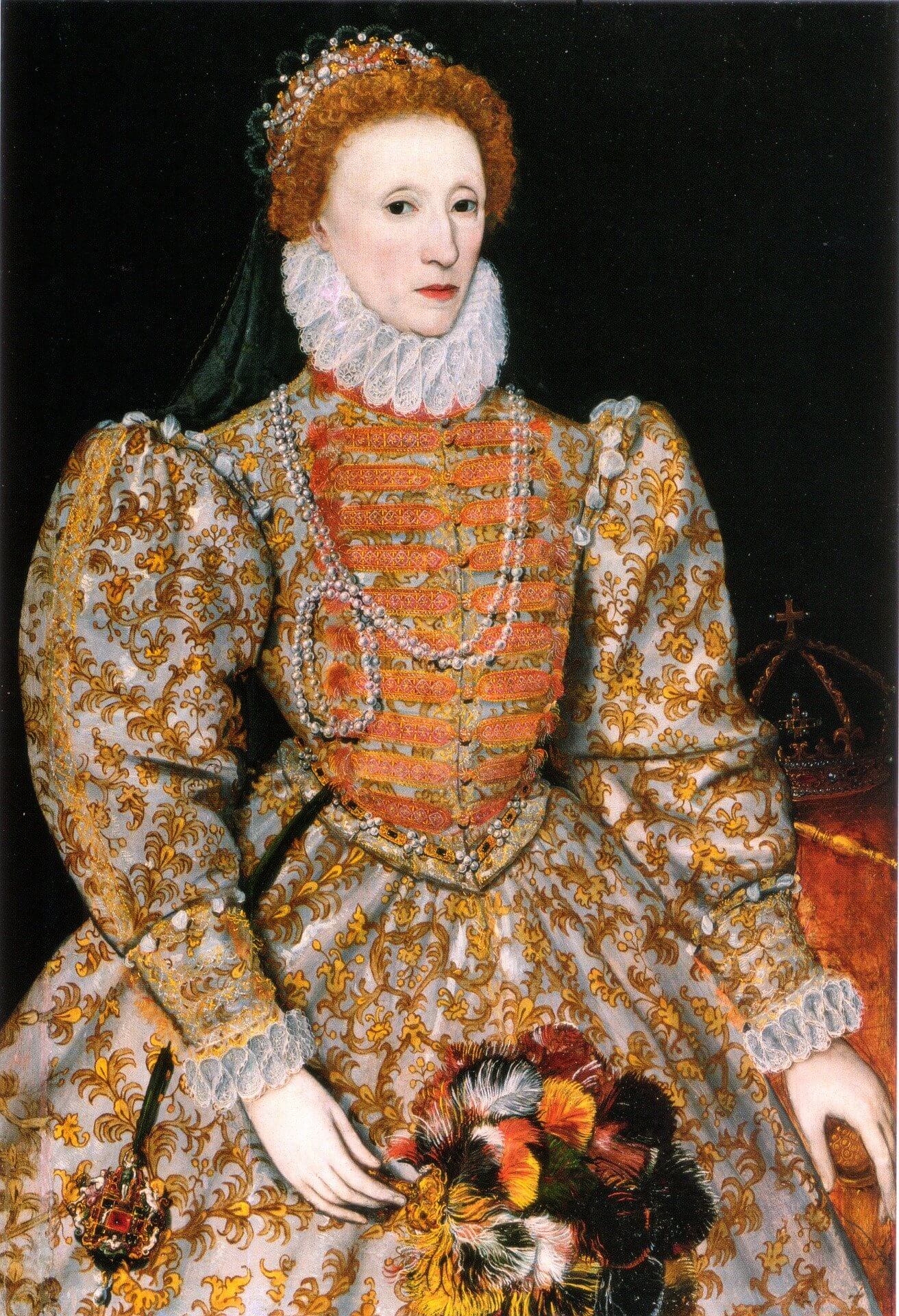
Common notions of beauty during the Elizabethan era would make quite a spectacle today. Queen Elizabeth I, wanting to keep a pure, innocent appearance, wore very white makeup that resulted in a thick, heavily made-up appearance. Although it was extreme, it did make her appear pale and hide her smallpox scars and wrinkles. During these times, women of high society modeled their appearance after that of the queen. It became desirable to have a high forehead, a small mouth, and pale skin and hair. Red hair was also thought to be beautiful. Many, if not all, of these styles were reserved only for the upper-class, wealthy ladies of the court and some merchant wives. Other lower economic groups were more concerned with working and therefore did not have the time, money, or ability to stay out of the sun or apply makeup. Many did not have the resources to have any type of skin-care routine at all.
Skin Care and Foundation
As pale skin was a sign of innocence, nobility, and wealth in both men and women, talc and other lightening and whitening substances were commonly used as makeup. Many skin-care products and routines were harmful to the skin, and some were even life-threatening. Wrinkles were often extreme due to the use of harmful skin products, which resulted in the use of more skin-care products to hide the damage. Many women, and some men, used ceruse to make themselves appear very pale and unnaturally white. Ceruse, a mixture of vinegar and lead, was a popular cosmetic foundation that led to horrific skin sores, wrinkles, acne, and other damage. Many women died of lead poisoning from the use of ceruse.
- It was uncommon to have a good skin-care routine, and many women did not wash off the ceruse (or other products) regularly, if at all.
- When women washed their faces, it was often with a mixture of alum, honey, eggshells, and mercury, as this was thought to treat blemishes and disguise wrinkles and other signs of aging.
Rouge
Rouge, also known as fucus, was made from some very unusual materials by today’s standards. It was often composed of a mixture of vermillion, gum arabic, egg whites, figs, ochre, madder, and cochineal.
- Vermillion was made from cinnabar, and gum arabic was made from the fibrous part of an acacia tree.
- Ochre comes from clay, and madder comes from a flowering plant.
- Cochineal comes from a beetle-like insect.
Eyes and Brows
During the Elizabethan era, wide and bright eyes were in fashion, ideally with thin, harshly arched brows above them. Women plucked their eyebrows into very thin, high arches. Women often used kohl to outline their eyes after adding belladonna drops to dilate their pupils.
- Belladonna is a poisonous plant of the nightshade family that can cause an increased heart rate and high blood pressure in addition to nervous system dysfunction and even death.
- Kohl eyeliner typically contains high levels of lead that over time can poison someone and make them deathly ill.
Hair and Wigs
Light blonde and reddish-blonde were the desired hair colors of the Elizabethan period. Women would often attempt to dye their hair. Some of the more common ingredients used to lighten hair were saffron, cumin seed, celandine, oil, and urine. Women who were not happy with their hair color often wore wigs. Queen Elizabeth was known to have consistently the same Tudor red hair color even as she aged due to the wigs she wore. Large foreheads were considered beautiful as well, so in addition to coloring their hair or wearing wigs, many women would pluck their hairlines back an inch or more to raise their hairline.
- Hair was tightly bound, and curls were placed close to the head to frame the face.
- Plucking and other harsh treatments, in addition to poor diets, often led to early balding in women.
Learn More
- Renaissance Fashion
- Elizabethan Clothing of Men, Women, and Children
- Who Were the Gentry?
- Queen Elizabeth’s Influence on Elizabethan Fashion
- Elizabethan Famous People, Fashions, and Day-to-Day Life
- Special Effects in Elizabethan England’s Theaters
- Aristocratic Women at the Late Elizabethan Court: Politics, Patronage, and Power
- Shakespeare and the Four Humors: Elizabethan History and Medicine
- Court Hierarchy in Elizabethan England
- Unmasking the Ideology of the “Ideal Woman”
- Medicine in the Time of Shakespeare
- Elizabethan Fashion in the British Isles
- Early Life, Culture, and Industry in Elizabethan England
- Clothes in the Elizabethan Era
- Queen Elizabeth I
- Clothing in Elizabethan England
- Queen Elizabeth I’s Wardrobe
- Shakespeare Unlimited: Sights, Sounds, and Smells of Elizabethan Theater
- Elizabethan Social Hierarchy
- Queen Elizabeth I of England
- The Elizabethan Age
- Social Structure During the Time of Elizabeth I
- Life at the Tudor Court
- The Fashion, Arts, Festivals, and Famous People of the Elizabethan Age
- Elizabeth I’s Fashion and Beauty

